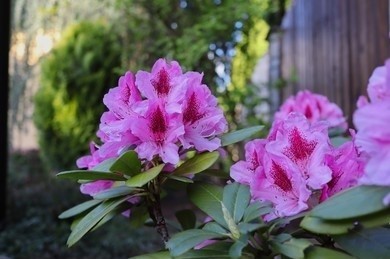Ericaceae Plant Tissue Culture
There are about 103 genera and 3,000 species of Ericaceae plants with a wide distribution, mainly in the temperate zones of the northern and southern hemispheres and the subtropical zones of the northern hemisphere. active ingredients of Ericaceae plants have good antibacterial and anti-inflammatory effects, and in recent years, they have become more important as neuropharmacological substrates.

Ericaceae plants are either highly appreciated or have a high medicinal value, in addition to a variety of uses such as edible and industrial raw materials. The roots, leaves, flowers, or fruits of some plants of this family are used as medicine for lung diseases, bronchitis, sore throat, and other conditions. Most of the plants in this family are famous herbal medicines with broad prospects for development and application.
Ericaceae plants are widely distributed, with many species, and their active ingredients are diverse, active, and versatile, with broad prospects for development. Propagation by cuttings is an important propagation tool for Ericaceae plant introductions, but it is difficult to form large-scale commercial production of wild species cuttings due to seasonal, mother plant material, and geographical conditions.
Tissue culture service
Many Ericaceae plant species are still in the wild, and most rare Ericaceae plants still rely on direct transplanting from the wild in small quantities for scientific research, botanical garden conservation, etc. The tissue culture technology provided by Lifeasible can provide an important channel for wild Ericaceae plant propagation.
Some of the Ericaceae plants that we have successfully tissue cultured
- Vaccinium corymbosum
- Vaccinium uliginosum
- Vaccinium dunalianum
- Vaccinium leucobotrysNutt.
- VacciniumsectionCyanococcus
- Ledum palustre
- Ledum palustre var. dilatatum
- Phyllodoce caerulea
- Rhododendron microphyton
- Rhododendron annae
- Rhododendron fortunei
- Rhododendron protistum
- Rhododendron decorum
- Rhododendron calophytum
- Rhododendron discolor
- Rhododendron megacalyx
- Rhododendron biachycarpum
- Rhododendron parvifolium
- Rhododendron anthopogonoides
- Rhododendron confertissimum
- Rhododendron argyrophyllum
- Rhododendron molle
- Rhododendron aureum
- Rhododendron mucronulatum
- Rhododendron hainanense
- Rhododendron bracteatum
- Rhododendron sinogrande
Lifeasible has used young stem segments and tips, newly sprouted shoots, and leaves as explants to obtain in vitro plants in Ericaceae plant tissue culture. For basic medium, we mostly use MS, 1/4 MS, WPM, Read, etc.
For species with high conservation and commercial value, Lifeasible focus on breaking through the bottleneck of its propagation technology, while combining tissue culture propagation technology with new species breeding, promoting its industrial development, and improving the conversion rate of propagation technology results, to promote the conservation and development of Ericaceae plant resources The reported species have been used in propagation research.
You want to sign a confidentiality agreement.
You have a specific plant species for your experimental needs.
You have a reliable and relevant cooperation project to discuss.
You are very interested in our project or have any questions.
You need an updated and detailed quotation.
For research or industrial use.



